Submitted by WA Contents
Marc Fornes created ultra-thin contorted installation for Astana’s World Expo 2017
Kazakhstan Architecture News - Sep 14, 2017 - 14:04 15782 views
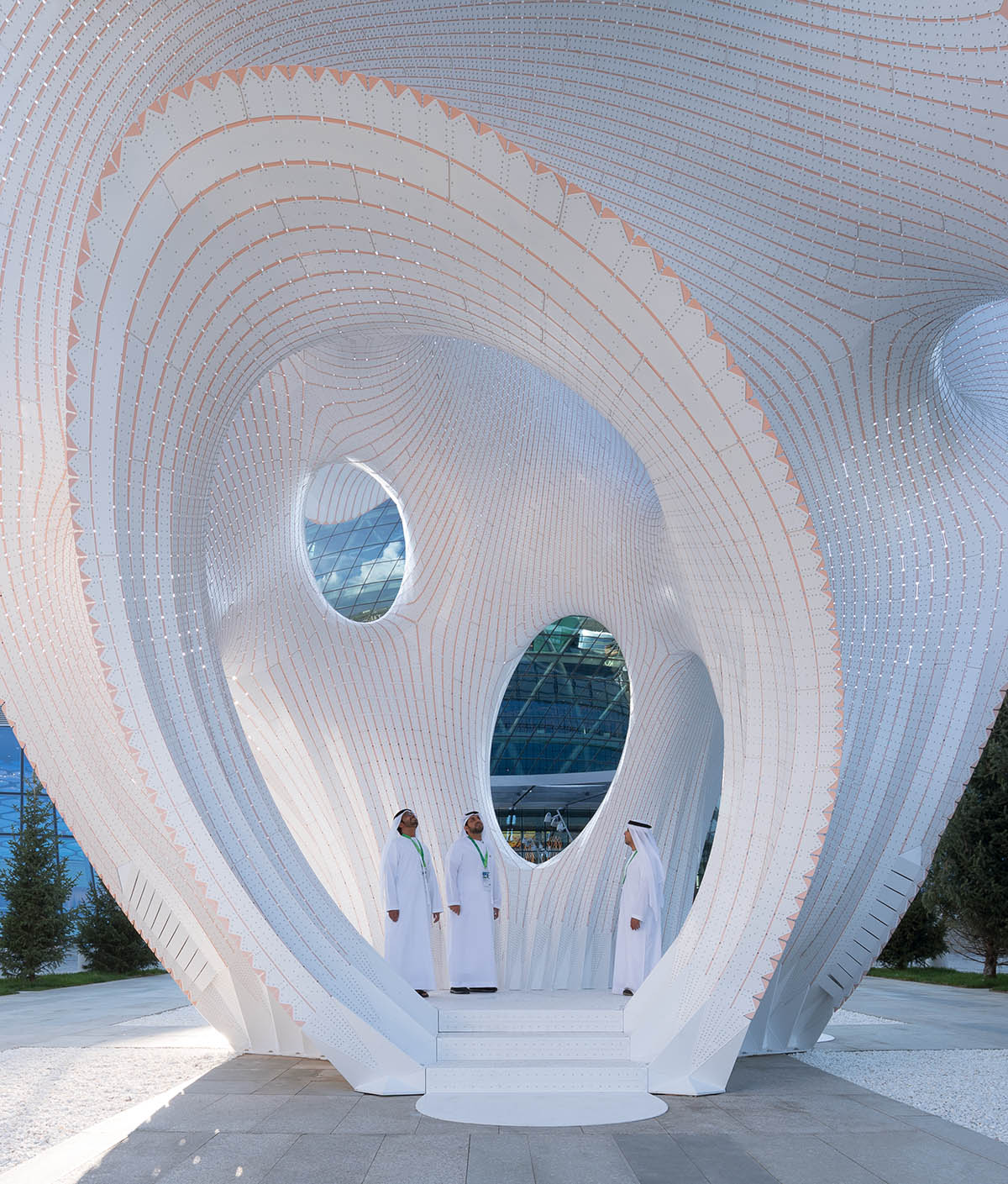
New York-based architect Marc Fornes has created an ultra-thin structure for this year's World Expo 2017 in Astana - the curvaceous-shaped installation tries to form a structural integrity with new materials and geometry, while offering different spatial qualities with its porous facade.
Marc Fornes runs his own office THEVERYMANY in New York and France and the firm has a special focus on prototypical architectures that are produced through computational design methodologies in varies scales and sizes. These prototypes are generally tested with large-scale installations, highly-organic self-supporting structures.
Video by THEVERYMANY
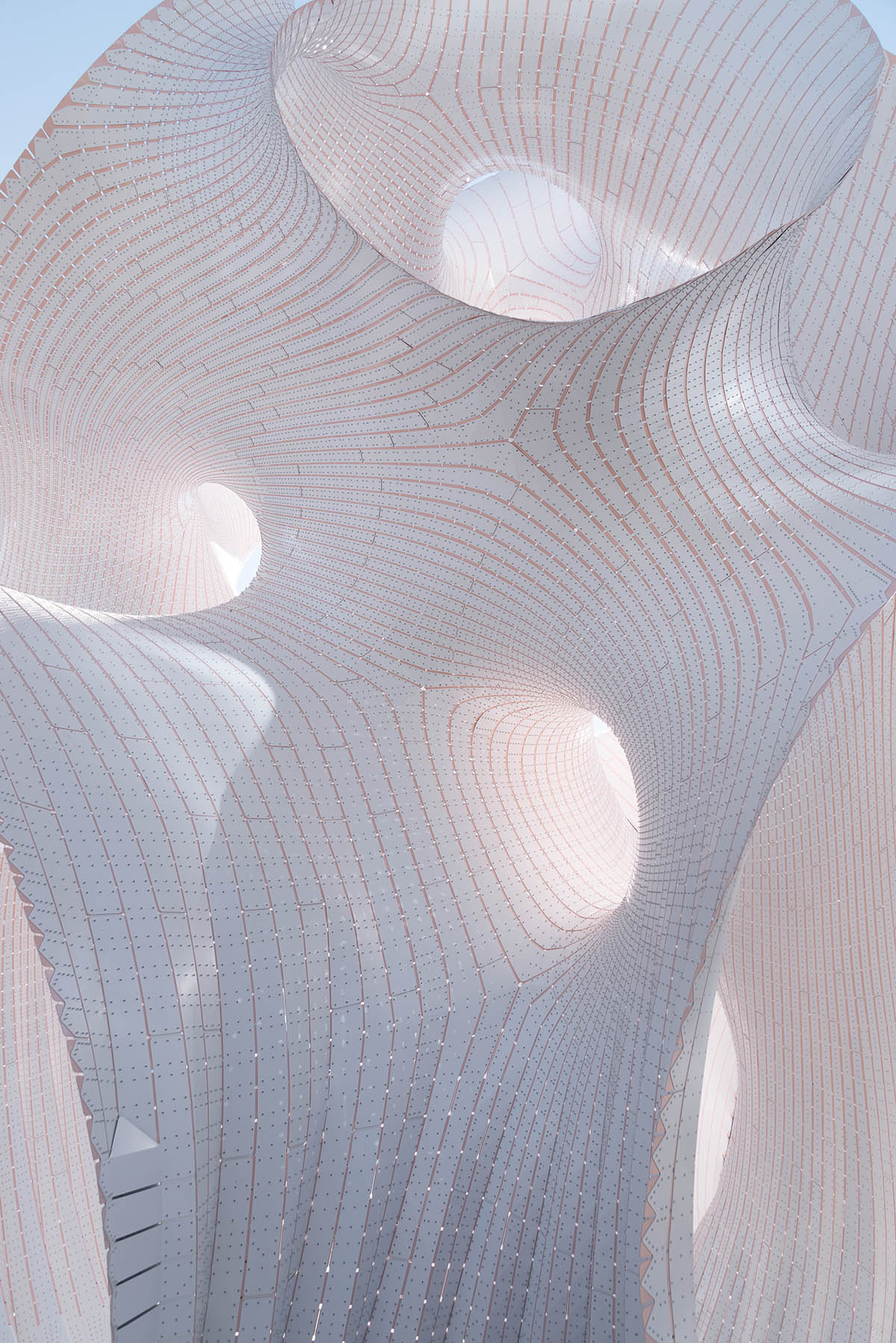
Named Minima | Maxima, the giant installation tries to push the boundaries of THEVERYMANY's research and development into achieving structural integrity through ultra-thin, self-supporting structures which find their strength in the double curvature of their form.
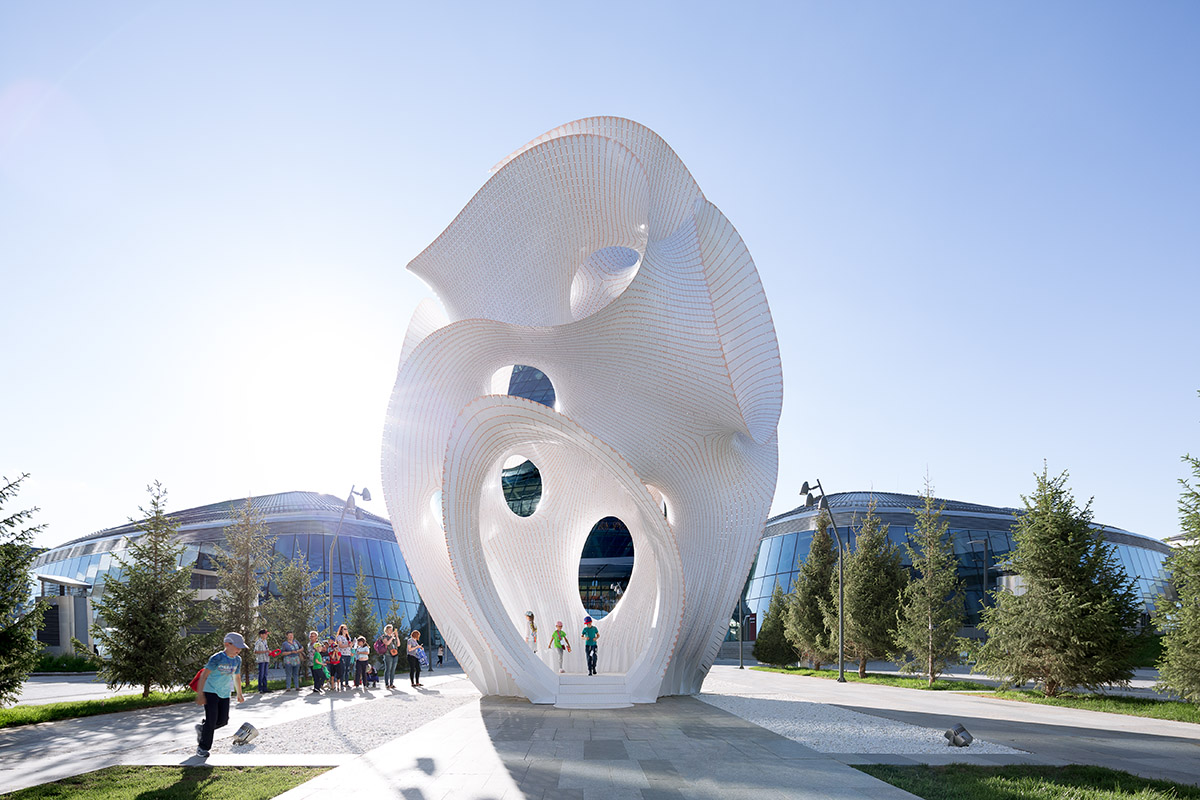
In the whimsical yet durable universe the studio creates, curves win out over angles; branches, splits and recombinations make columns and beams irrelevant. A 'networked' surface rolls in, on and around itself, transforming into a space that obscures our preconceived notions of enclosure, entrance/exit, and threshold, while also providing its own support to stand up. The surface of the installation is made of an ultra-thin material - 6 mm aluminum.
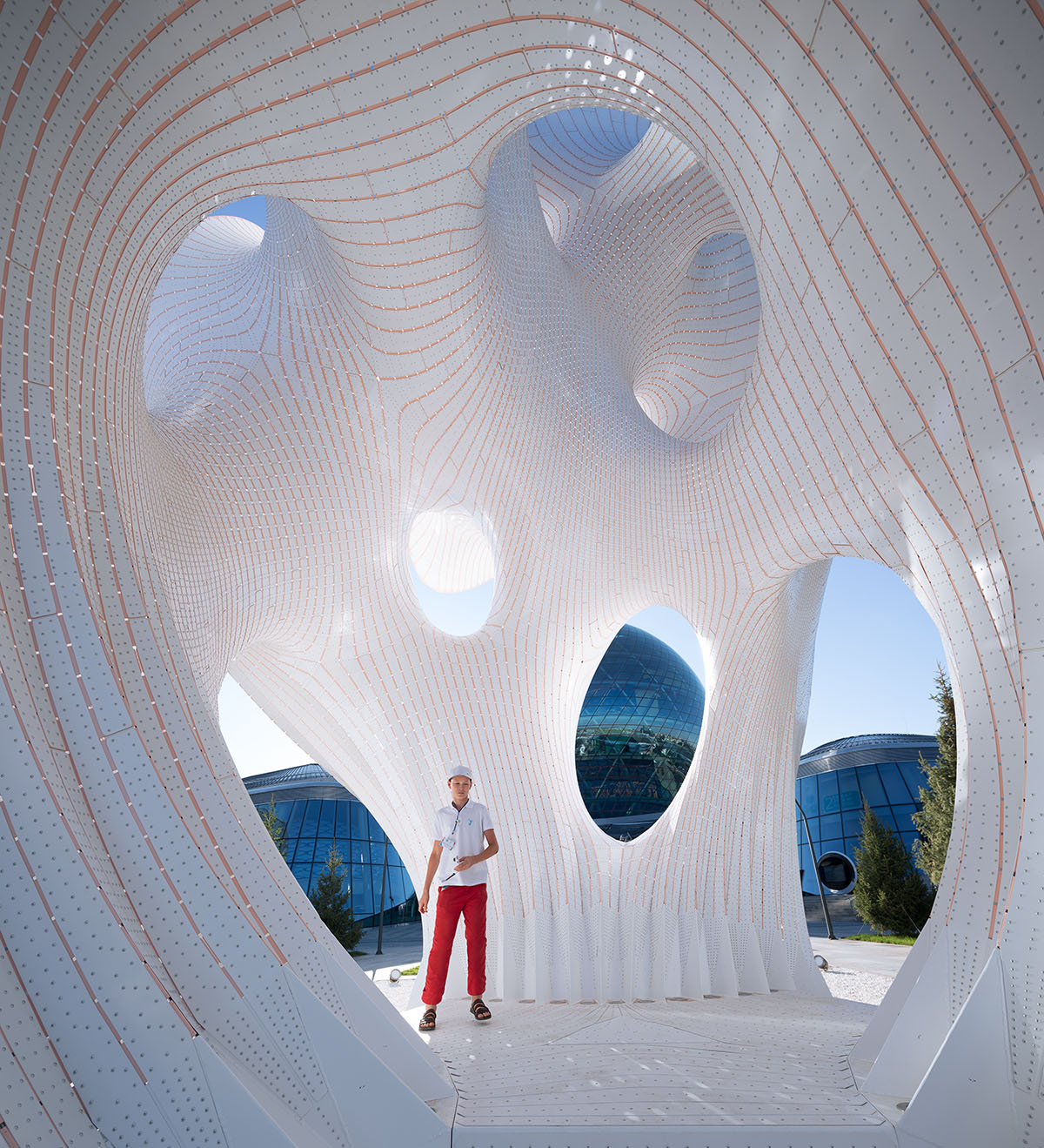
"If an egg were scaled up to the same height as Minima | Maxima, it would be much thicker," said Marc Fornes.
"To be inside Minima | Maxima is to be transported to a strange, future, science fiction world, removing us from ourselves and finding within a sense of naive wonder. The project is radically different than the built environments we know."
"The impulse is to explore, to visually wander. Transformed into a childlike state, visitors can do so without the pretense of reference or concepts, employing instead the potent investigative powers of our senses," explained the architect.
"What is it? How on earth - if on earth - is it made?"
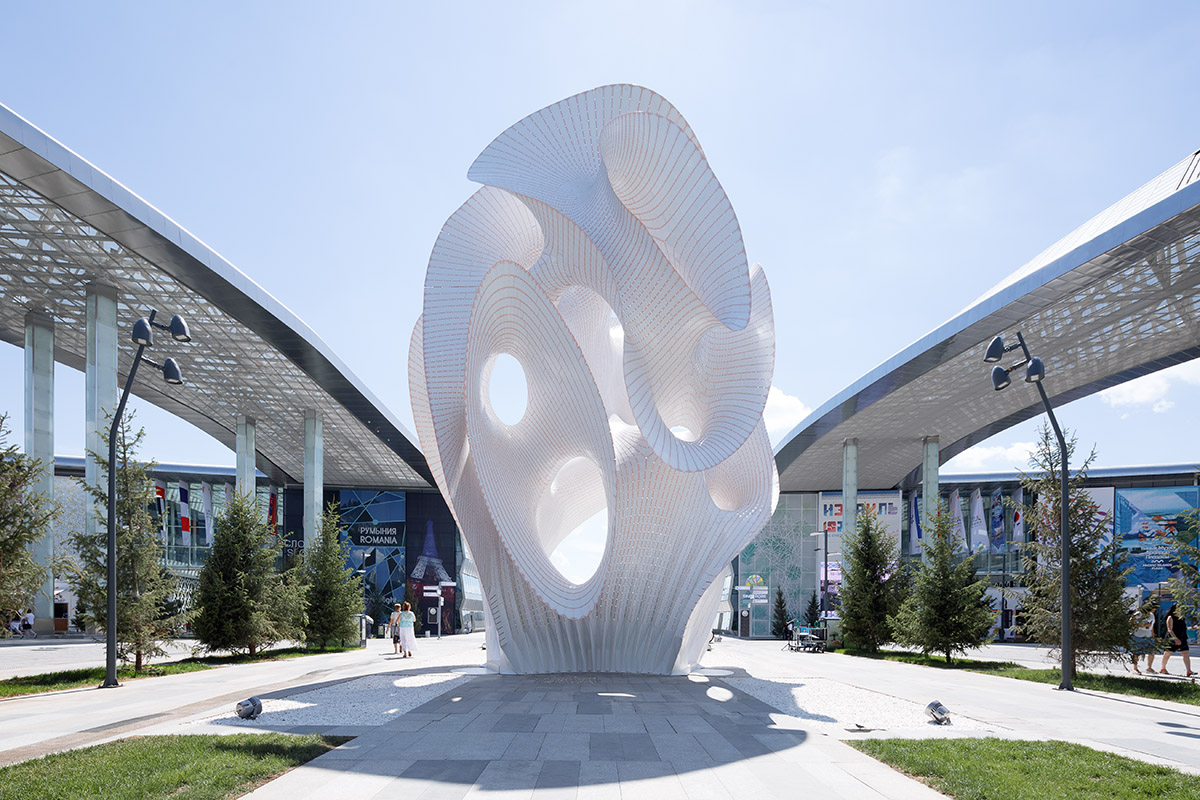
Towards the base of the structure, the rolling surface begins to softly corrugate, its zig-zag angles gently rising into a full pleat as they meet the ground platform. The visual threshold of this transition - from a pleated base to a smooth and doubly-curved, continuous surface - is subtle, yet its structural effect is significant in achieving the height of 43'.
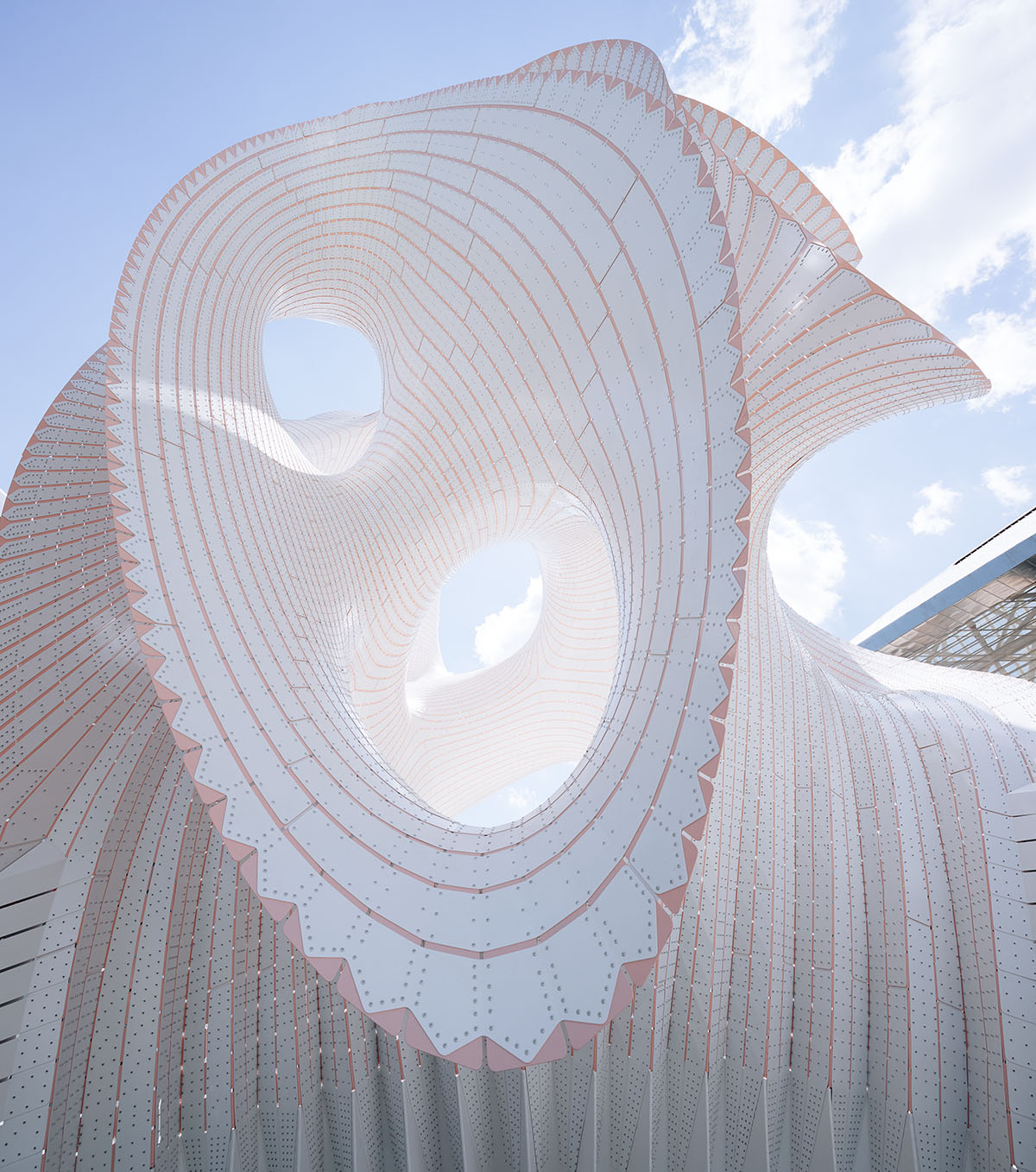
The structure comprises three layers of flat stripes - white and white sandwiching pink - are constructed in tandem, supporting one another as they assume curvature and gain height. One layer never exists independently, but contributes to and benefits from the unified whole as it is built.
The stripes of each layer move perpendicularly from one another, creating an anistropic composite material (structural property of composite depends on direction) from an isotropic material, such as aluminum (properties of material are mostly the same in all directions).
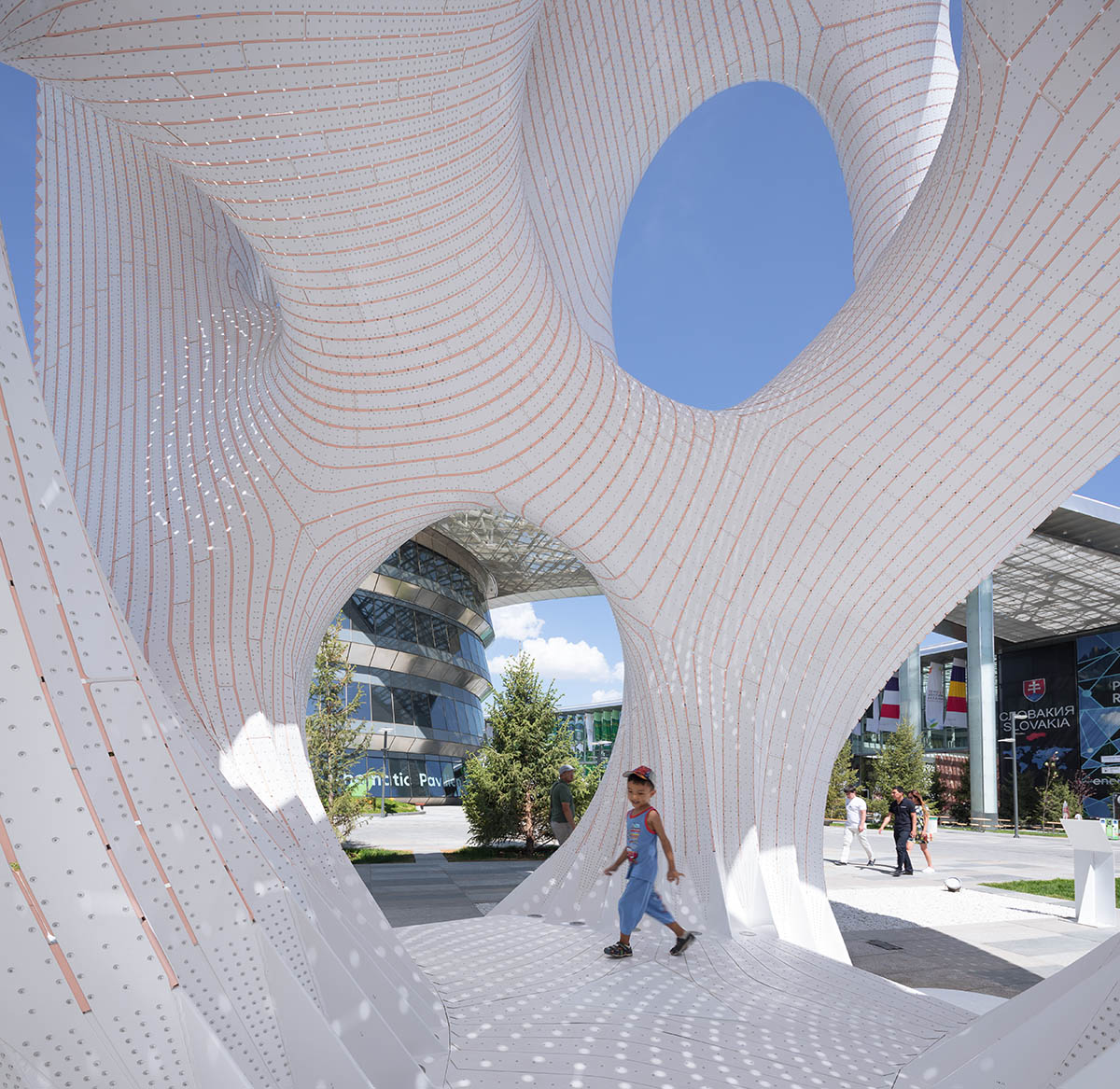
The system warrants comparison to fiber technology - such as carbon or glass fiber - yet is unique in that unlike fibers, each individual component does not need to be in tension (a straight line), and/or their processing does not require any mold or temporary scaffolding. Also such a composite system is mechanically bonded, allowing for recomposition and corrections during construction.
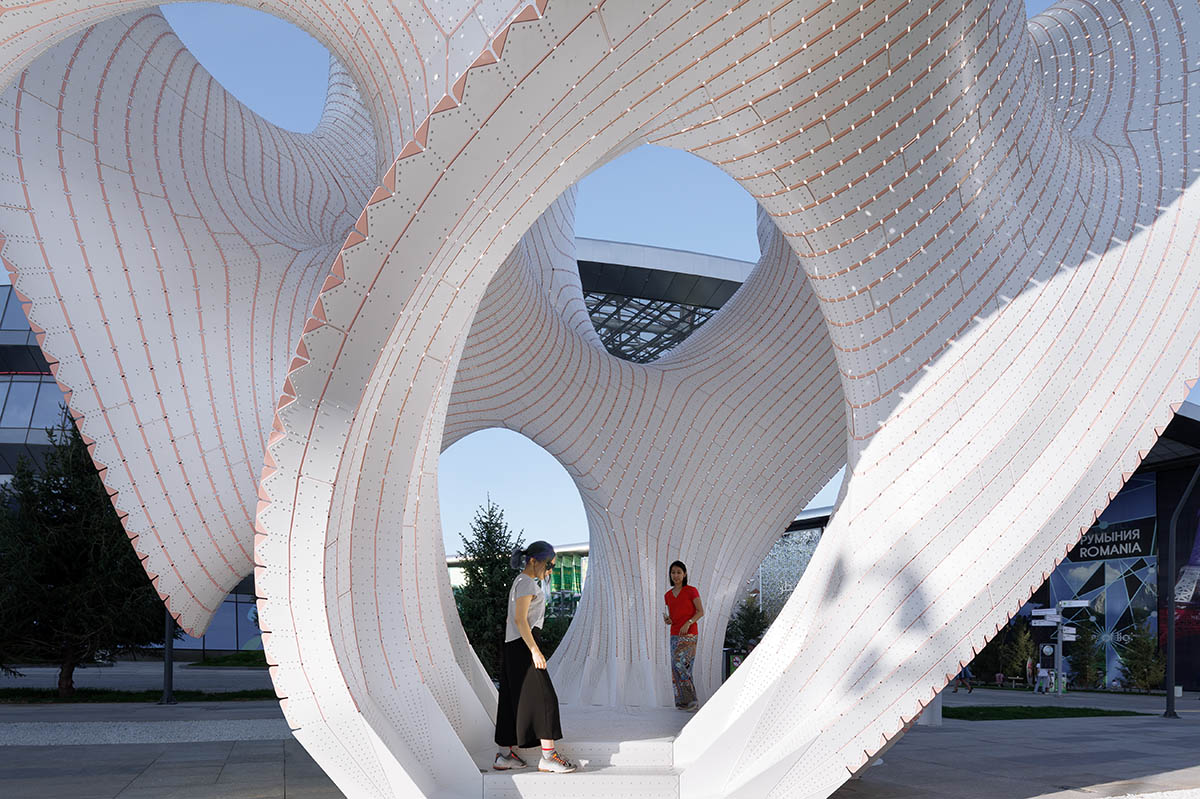
The project was commissioned by World Expo 2017, an event with a history of architectural and engineering innovations. The structure was situated prominently on the grounds in Astana, Kazakhstan, where it will continue to live as a permanent structure.
The environment it creates proved to be a successful destination and experience for visitors, inciting curiosity from afar, providing a moment of contemplation and enjoyment, and playing a significant part in thousands of selfies and photos.
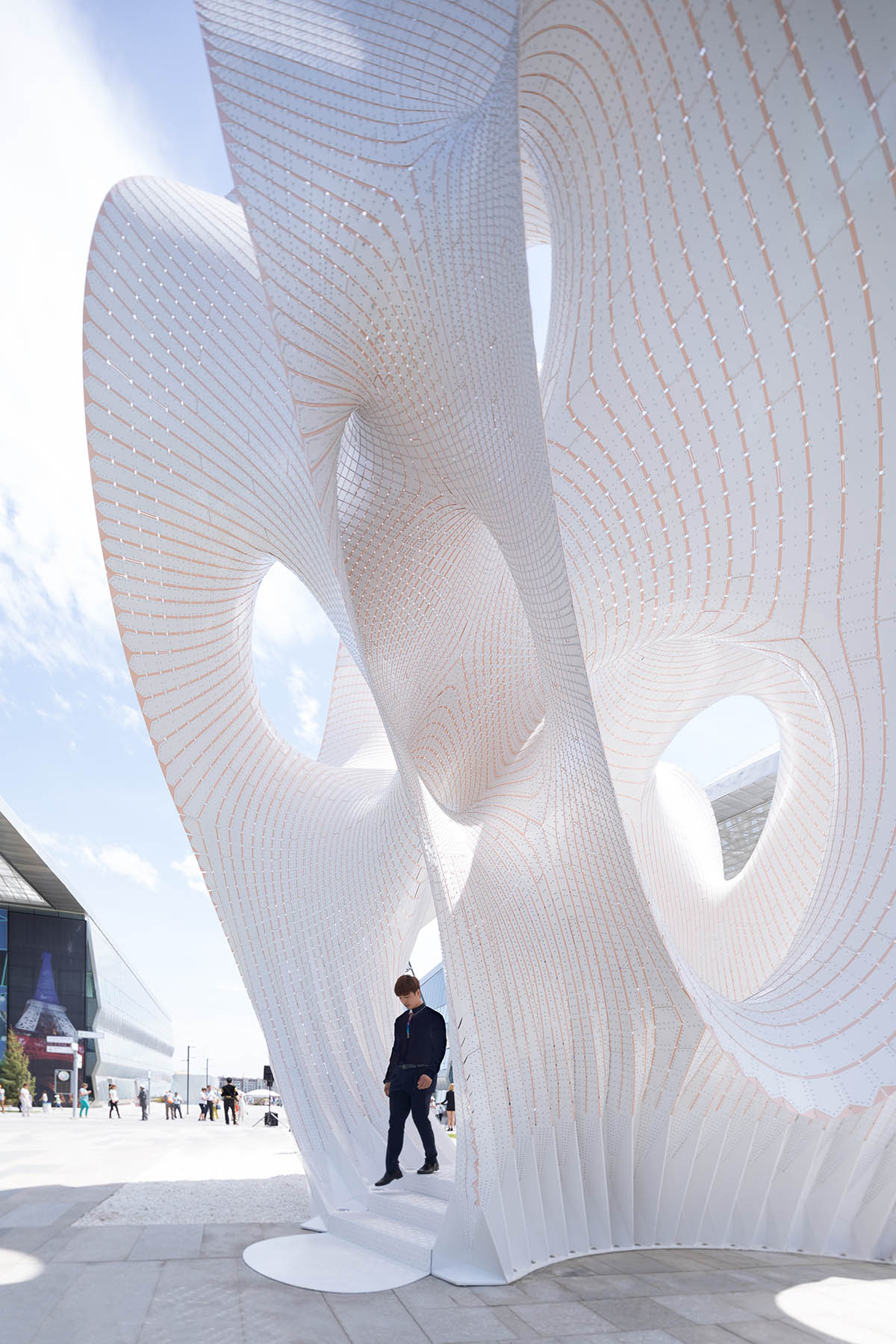
The constructions of Marc Fornes / THEVERYMANY are affectionately dubbed ‘crawling assemblies’ for their computational process as well as their likeness to multi-legged critters and curious organic forms.
Though Minima | Maxima is made of 2mm aluminum, it reaches a height akin to four building storeys. The permanent project is consistent with the approach and language of a recent slate of the studio's projects, increasingly assertive in the direction of the architectural scale.
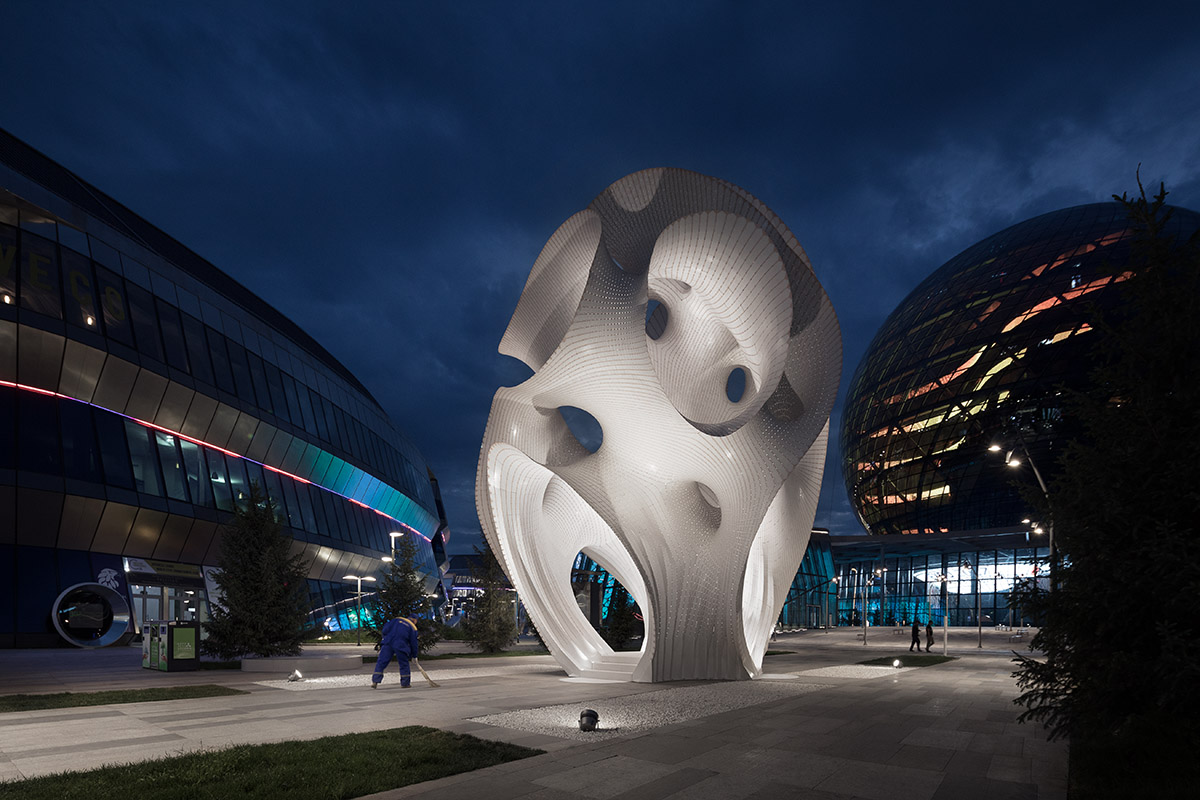
Project facts
Project name: Minima | Maxima
Location: Astana, Kazakhstan | World Expo 2017
Commission: Epazote Vladislav Sludskiy
Dimensions: 43’ H x 6' W x 6' D
Material: 2mm Powder-Coated Aluminum
Structure Stripes: 5,312
Material Layers: 3
Rivets: 164,252
All images © NAARO
> via THEVERYMANY
